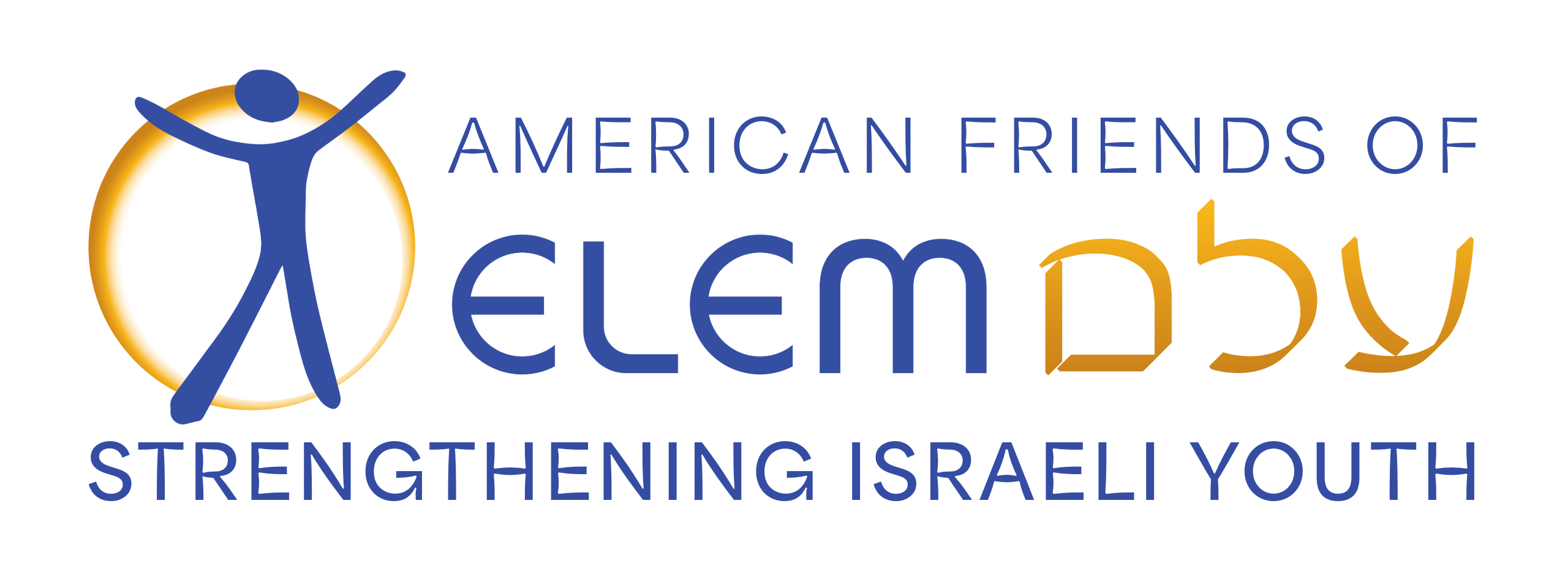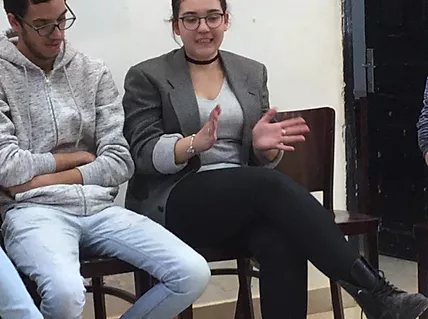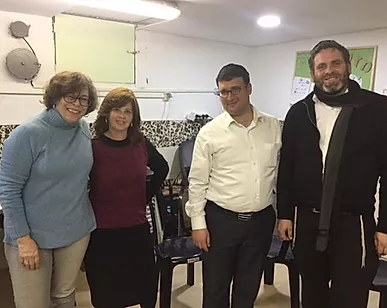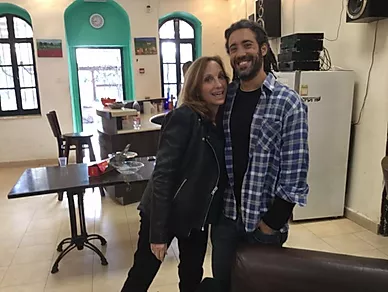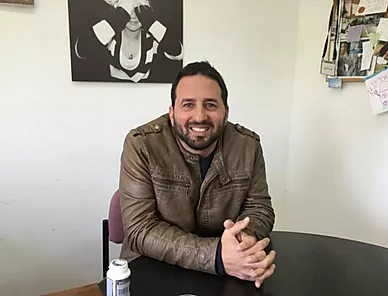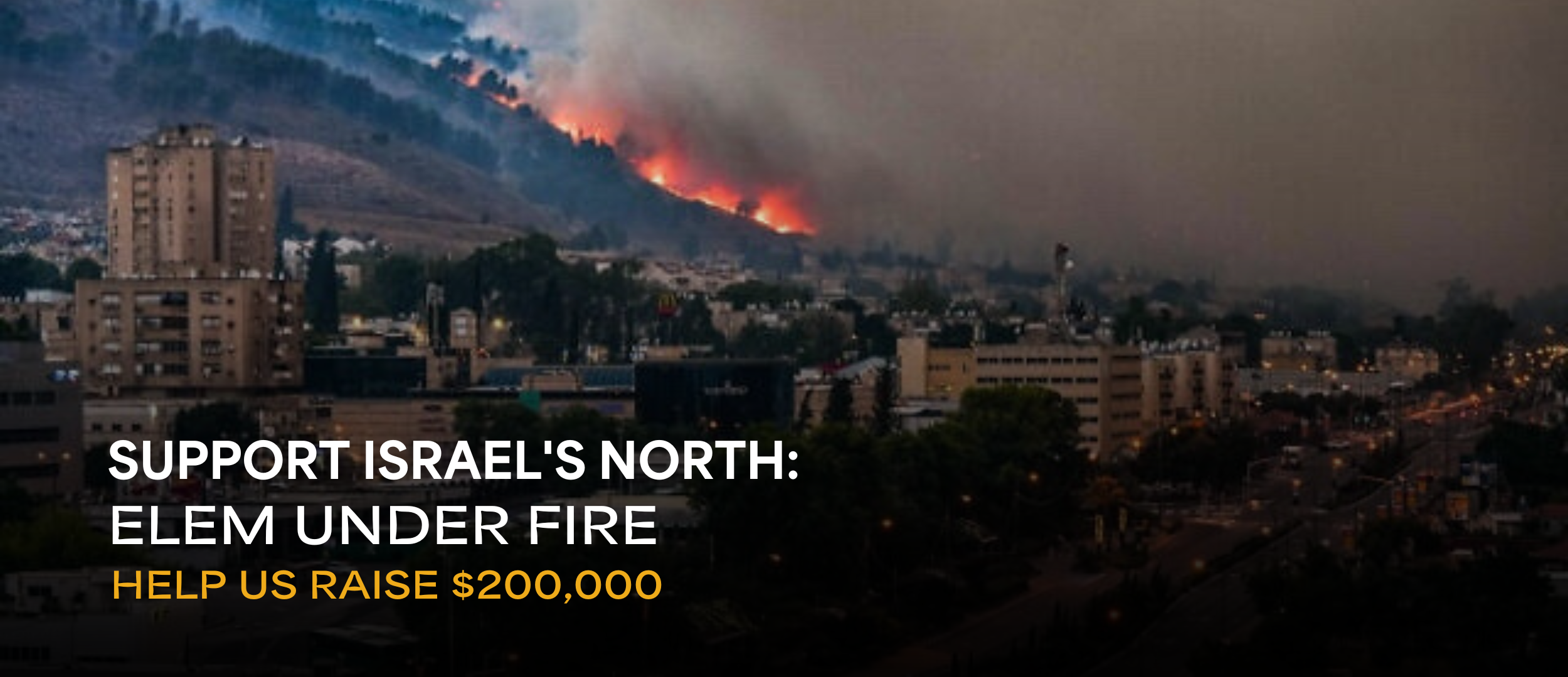I wasn’t sure how I’d feel. I’d been volunteering with ELEM for six years, but hadn’t been to Israel during that time, so I’d never seen the projects in action. I was visiting Israel for a month. Would I see youth on the streets? Would I be able to see the effect that so many kids dropping out of school and living on the streets was having in Israel? Would I think our projects were effective?
My first 10 days in Israel were in the hip area of Neve Tzedek in Tel Aviv. It was beautiful, with great shops and cafes.
No distressed youth that I could see here.
From there, I visited a friend who I met 28 years ago on an archeological dig close to the lovely neighborhood of Kiryat Tiv’on, near Haifa, The site has been completed and is open to the public. It was great to see what our digging produced. Again, to my eye, there was no obvious need for ELEM’s projects here.
Then I went to Jerusalem to visit an old client of mine from my public relations agency days and relax in this magical place. I didn’t have plans to visits our projects.
I stayed near the Old City. Although I know that greater Jerusalem is a very poor city that has many distressed youth, all I saw in the neighborhood were youth hanging out on the streets at night. They didn’t appear to be the kids who ELEM primarily engages with in Jerusalem and throughout Israel — those who are drug and alcohol addicted, homeless, abused and so troubled that they can’t function in mainstream society. I didn’t see them — and I was looking for them.
Then I went back to Tel Aviv to meet up with Lenore Ruben, ELEM’s president in the US; Inbal Dor Karbel, executive director in Israel; and Nava Barak, president in Israel, to tour ELEM projects.
We went to Kiryat Gat to see ELEM’s work with Ultra-Orthodox youth. I learned that many of these youth hide their problems from their parents and teachers. Helping them is complex. It involves working with their rabbi or rabbis who sometimes disagree among themselves. Even with the support of the local rabbi, the wonderful ELEM counselor who spoke with us told us she was berated in the streets by parents who learned their children had come to ELEM for help.
At “A Real Home,” a drop-in center for abused young women, a few youth sat in the lounge, eyes averted, waiting for our meeting to conclude so they could meet with their counselors. As I left, a female soldier sat on the steps of the center crying. Walking on the street, I would never have been able to identify these women as abused or troubled. In Kiryat Yam at ELEM’s multicultural center, I heard from Mazel, an Ethiopian counselor, that Ethiopian youth felt they could trust her because she was one of them. I met an Arab youth who was working with Khalil, an amazing Arab counselor, to learn how to successfully live independently and get a job. I saw ELEM’s incredible work at the vocational training center in Be’er Sheva where youth learn to believe that they are capable of holding a job and are trained to work in call centers.
Mazel, center, an Ethiopian counselor, discusses the needs of these youth
I saw first-hand how ELEM’s projects reach youth who are invisible to most of us and get them back to school, into the IDF, or trained for a job and back to feeling good about themselves. I saw that my six years of work with ELEM was well worthwhile, and I’m motivated to keep on going strong.
I also learned that the adage is true: just because you can’t see something — or someone — it doesn’t mean they aren’t there and that they don’t desperately need our help.
So when you plan to visit Israel and want to see ELEM’s work and the troubled youth who will likely be hidden from your eyes too, let us know. We’ll arrange for you to meet them and learn about their struggle to get off the streets and on to life.
 Editor’s Letter
Editor’s Letter